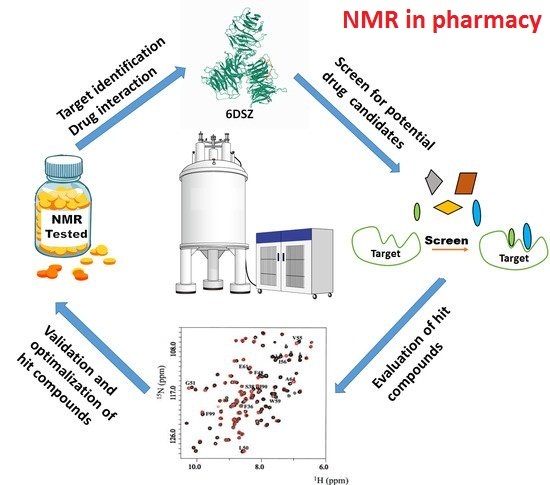Nuclear magnetic resonance (NMR)
Nuclear magnetic resonance (NMR) is the name given to the study of the absorption of radiofrequency radiation by the nucleus. The term NMR is simplified to Nuclear Magnetic Resonance. This method is used to study and determine the structure of the composition of materials or chemical synthesis. The NMR analysis method is more effective than other molecular spectroscopy methods but is not common and available due to high analysis costs such as infrared spectroscopy (FT-IR). In general, the use of NMR in medicine, pharmaceuticals, food, chemical, and agricultural industries can not be ignored. The basis of this method is based on measurements, electromagnetic radiation, in the radio frequency range of 4 to 1000 MHz (MHZ). Unlike other spectroscopic methods (FT-IR) and UV / Visible, in which electrons are involved in the process of absorption and energy transfer, in NMR the nucleus of the atom is involved in the process of absorption.
Application of Nuclear Magnetic Resonance (NMR) in Pharmacy
Nuclear magnetic resonance (NMR) provides the best possible solution for drug companies to achieve their goals. In recent years, the use of nuclear magnetic resonance imaging methods for quantitative analysis, determination of drug impurity characteristics, determination of drug product composition has become very widespread. For pharmacists, the use of solid-state NMR can provide useful information on the structure of pharmaceutical powders.

Analysis of drugs using NMR
The world's leading pharmacy prescription books use the magnetic resonance imaging method of the nucleus to identify drugs and reactants. By increasing the number of species participating in the reaction, they can be identified using the 1H NMR and 13C NMR spectra. کرد. In the following, we will examine the quantitative and qualitative applications of NMR core magnetic resonance in pharmaceutical sciences.
Quantitative and qualitative applications of NMR
NMR core magnetic resonance is used in pharmacy in both quantitative and qualitative forms. BP) and ... the use of NMR spectroscopy to identify targets and quantitative spectroscopy to evaluate drug compounds, which mainly include drug impurities and substances used to absorb drugs are mentioned.
Qualitative applications
• Determining the structure of drugs
The most important purpose of NMR is to determine the structure of drug compounds. The first step is to obtain the 1 H NMR and 13 C NMR spectra to identify CH, CH2, CH3, and type IV carbon. For many simple molecules, these spectra can be easily interpreted and their structure determined. For larger and more complex molecules, in addition to a closer look at other spectroscopic techniques such as IR and MS, they are also helpful.
Impurities
Impurities are detected by NMR, a common type of impurity identified by NMR is the solvent impurities remaining from the production stage. Therefore, familiarity with the peaks of common organic solvents such as acetone, ethanol, etc. is necessary for NMR technicians, due to the low molecular weight of the solvents, their peaks are known at the beginning of the spectrum and therefore small amounts of solvents. They are often recognizable. Mass spectrometry using NMR is crucial to determine the structure of compounds.
. Magnetic resonance imaging of the nucleus can also be used in various fields of drug quality assessment.
Pharmacological diagnosis
Determine the level of impurities and reveal their structure, and observe the decomposition process
Investigation of the content of residual solvents
Identification of co-element compounds (diastereomer ratio and nanometric addition using krill additives)
Determining the ratio of basic proteins of drugs and organic acids
Quantitative applications
Quantitative analysis is used to determine the number of solvent residues and impurities in pharmaceutical products. When quantitative methods are used to validate the final drug material, these methods should be considered for validation with other designated methods. Low field strength NMRs (90 and 60 MHz) are used in quantitative methods developed for drugs and pharmaceutical products, including FT and CW. USP methods for amyl nitrite (pharmaceutical products and their amount), phenytoin pharmaceutical products, dicyclomine pharmaceutical products, and naproxen for anatomical purity.
75 MHz and 300 MHz NMR devices are used to determine the purity of vitamin E raw materials and reference standards.